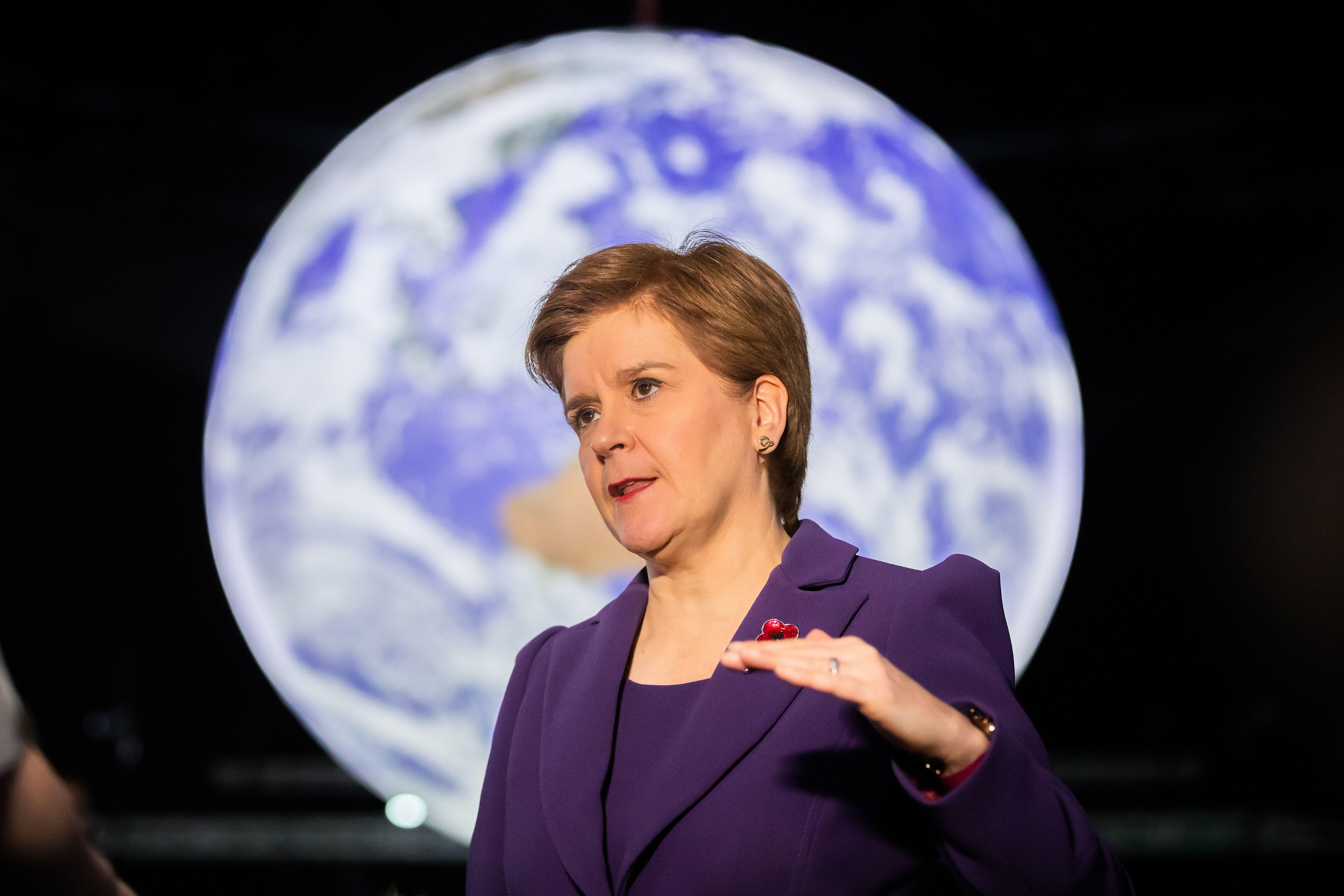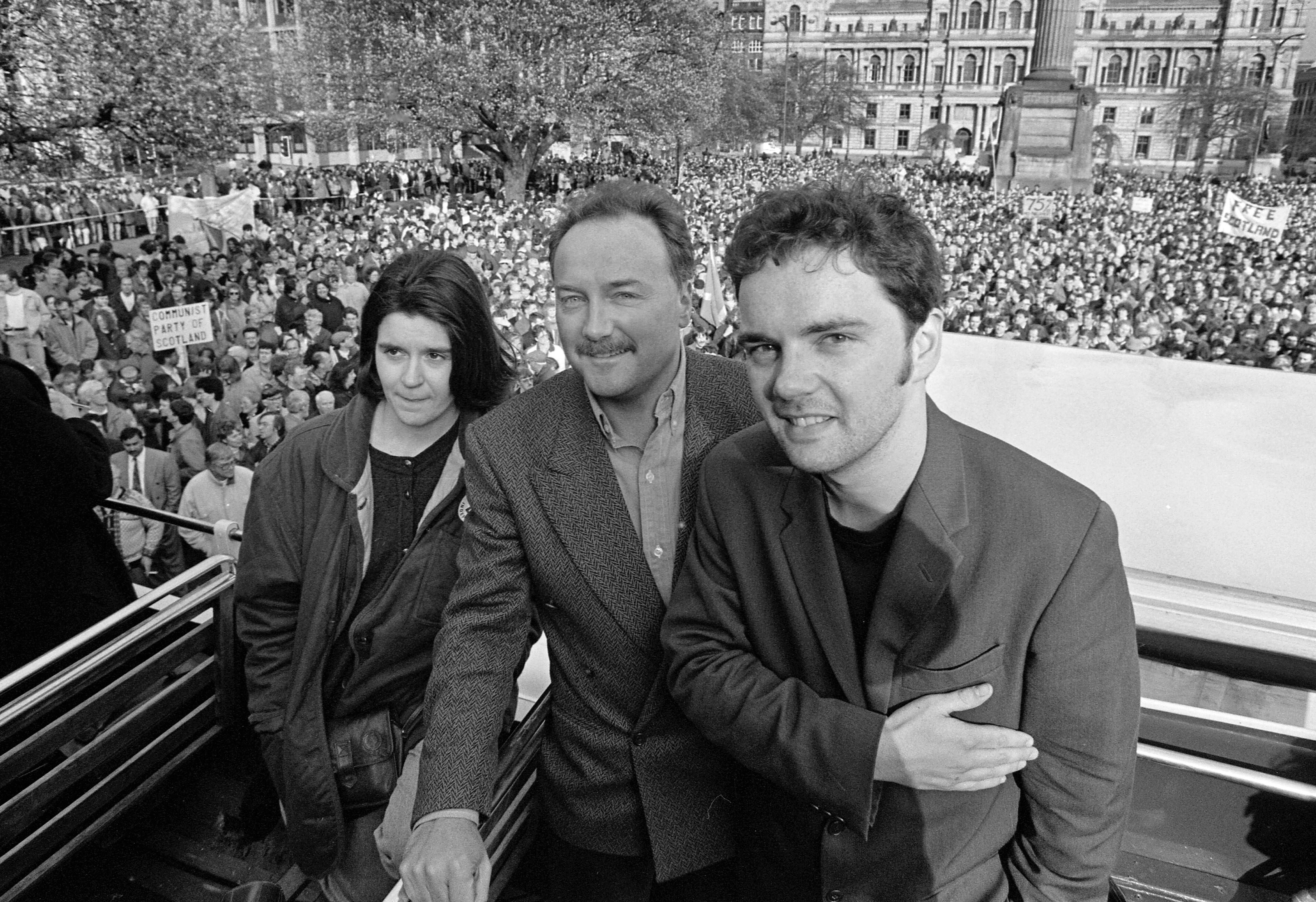Future Facing: After seven years as First Minister, Nicola Sturgeon remains one of the UK's most popular politicians
Nicola Sturgeon has been a fixture of Scottish politics now for going on three decades. She has been in government for 14 years, first minister for seven and if she remains in place for another six months, she will take the crown from Alex Salmond as being the longest serving first minister of Scotland.
At 51, Sturgeon casts a long shadow over Scottish politics. She is a familiar face. Everyone thinks they know her. Apocryphal tales abound. And despite her relative shyness, she has blossomed in the exponential rise in her mass popularity, nurturing an image which is carefully manicured and managed by a team of apparatchiks which includes, handily, her husband, the chief executive of the party, Peter Murrell.
But who she is and where she stands politically, aside from on independence, is less well understood and even on that central constitutional question, doubts have begun to emerge about how and when she ever sees independence happening and whether being in government appeals more to her managerial side than being up for the fight to actually win independence.
Indeed, as things stand, the question over when a referendum might happen is much more ruminated on than the actual case for independence ever is.
And as Sturgeon prepares to speak to the party faithful at this year’s second party conference, there will be some in that virtual room wondering why their leader was prepared to press the flesh in person with global audiences at packed conferences, and summits, from Iceland to Glasgow in the last few weeks and months, but is firmly stuck behind a paywall when it comes to her own party members.
But regardless of whether you buy into the cynical view that keeping the mighty leader distant from face-to-face interaction with delegates and the press suits her current agenda, it is also remarkable that after so long in government, and with so many unfulfilled promises around education, health, social justice, and even on a referendum, that the public, never mind her members, still want more. A poll just last weekend found that more than half of voters want Sturgeon as first minister until at least 2026.
And while much of that desire to keep her in Bute House could be attributed to a derisory opposition, there is also the question of why she is the only SNP name ever in the frame. And whose fault that is.
One measure of leadership is recognising and nurturing talent, as Alex Salmond did with her. Indeed, when he was at Westminster, he would talk about his deputy in embarrassingly glowing terms, saying that there was no one better than her to hold the fort. All of that was designed to up her profile, bolster her popularity – she had a mixed popularity among activists at the time – and ensure that she was his natural successor. Sturgeon, however, has no such protégé.
There is no succession management under Sturgeon’s tenure which for the party could yet be her biggest failure.
Speculation swirls about where her next move could be – her magnificent soft diplomacy evidenced during COP26, inevitably, was seen by some as a rehearsal for any global job interview. And what it lacked in political substance or purpose was balanced by her natural ability to engage with others and to recognise a PR opportunity when she saw one.
The absence of the prime minister only amplified her presence, and his gracelessness only helps highlight her communication abilities. But the fact remains that after 14 years in government, she has no obvious successor and that should be a deep concern not just to the party, but to the country.
And who could blame her for potentially looking at a life elsewhere? There is no doubt that the events of the last two years will have taken their toll. The pressures that came from the Salmond affair, the subsequent inquiries, and the risk to her very job with the independent investigation into whether she had broken the ministerial code, will all have weighed heavy.
The pandemic has also seen her constantly under public scrutiny as she put herself front and centre of her government’s response to getting us through such unprecedented times. But it also raised the question of whether she trusts any of her ministerial team to do a better job than she can.

Sturgeon won plaudits and some criticism for her soft diplomacy at COP26
Meanwhile, policy failures around closing the attainment gap, taking her eye off the ball on drug deaths, of failing to live up to promises around the poor outcomes for care-experienced young people, mounting hospital scandals, and increasing waiting lists, along with a sense that she doesn’t get business, have done little to damage her electoral chances.
And her popularity, while having taken a bit of a dent – a recent poll has seen her ratings fall by 40 points although she remains the only Scottish party leader with a positive score - was only rubber-stamped once again by May’s election result which saw her party win for the fourth time at Holyrood, albeit without a majority.
And yet, here we are, with set piece media interviews restricted to fashion titles such as Vogue magazine, or with less home-grown commentators, in which the focus is inevitably less on unmet policy commitments and more on matters like writing her memoirs or pondering on whether fostering might prove a future option, it only leaves the question of ‘What next for Sturgeon?’ stubbornly hanging in the air.
Former first minister, Jack McConnell, told Holyrood in a much-quoted interview earlier this month, that he despaired of where Scotland finds itself. Polarised and “stuck in treacle” was how Lord McConnell described it as he was brought to tears talking about the state of political discourse in Scotland.
And yet, despite his clear affection for Sturgeon, he also expressed frustration that they no longer speak as readily as they once did. He described her policy agenda as lacking in ambition, of her ministers and national institutions too cowed to speak up and out, and he painted a picture of a parochial Scotland that was more interested in creating grievances with the UK Government than working with it for mutual betterment.
Asked what he would be thinking as first minister if he had been in the job as long as Sturgeon, he said that he knew what he was thinking as first minister back in 2007 and that he was hungry to do more and “that enough was never enough.” Asked whether he believed the same introspection would be going on in Bute House right now, he didn’t think it could be.
It’s hard to know what Sturgeon is thinking. In some respects, she is a political chameleon. There’s little doubt she supports independence but what that means to her is far from clear. She reinvents herself with the zeitgeist.
Some would see her as a champion of equalities and yet for many that were around during the fractious repeal of Section 2A in Scotland (Section 28 elsewhere), that description sits at odds with her lack of fervour during that particular campaign when she was an advocate of providing its critics with reassurance, a stance which now sits at odds with her dismissing women’s concerns over the proposed reforms to the Gender Recognition Act (GRA) as “not valid”.
And as a self-declared feminist, something she claims a lot, there are those within the party that will say she was a late arrival to the cause. And as an even more recent evangelist of all things green, including taking in two Green MSPs to her ministerial team, and declaring that she would not give the green light to the Cambo oil field, this is, it should be remembered, a woman who authored the 2014 independence prospectus that had the extraction of oil at its core.

Sturgeon with George Galloway and Pat Kane in George Square, Glasgow, 1992
Sturgeon is, by any measure, one of the most remarkable politicians of her generation but her extraordinary abilities in debate, image, presentation, and communication mask weaknesses – she lacks a strategic mind and allows rhetoric to get out of control. She is a great tactician but cannot see beyond the immediate. Her government has cared more about spin, photo-opps and populist measures than long-term thinking.
And it is difficult to think of one big policy idea of substance – leaving aside the rhetoric about closing educational attainment gaps, putting ‘love’ into the care system, or making Scotland the best place for a child to grow up in – that has been implemented, worked, and that she would be associated with bar the ‘baby box’.
Sturgeon’s innate ability to feel the political pulse was fuelled by being Salmond’s deputy – his eyes, and ears on the ground. While he was at Westminster, she was in Holyrood, always out on the shop floor, in and around parliament and among parliamentarians. That is no more. She is increasingly remote, even her ministers are not part of any inner circle. Details of the talks with the Greens were a surprise to many within even her own Cabinet and their concerns about having them, particularly Patrick Harvie, in there remain, along with ongoing anxieties about her dogmatic approach to the reform of the GRA and the fall out that may follow.
Despite it all, Sturgeon remains the SNP’s star player by some measure, but there is nothing to say that the SNP’s greatest asset in terms of keeping the party in power, could also prove to be its greatest liability in terms of taking Scotland nowhere near independence whether she stays around or not.
Speaking ahead of her virtual party conference and addressing speculation that she was preparing to stand down, the SNP leader told the BBC’s Laura Kuenssberg, she had “no intention of going anywhere” and was determined to lead the country at least until the end of this parliament in 2026.
This echoed what she said in Holyrood on the eve of her 50th birthday last year, I asked Sturgeon how she felt about reaching that milestone, given she had organised her own wedding to fall on her 40th birthday a decade earlier to avoid having to even think about turning 40.
“I definitely don’t want to slow down and, to be clear, I’m not talking about changing direction either! That speculation [about standing down as first minister] will always go on because people like you will always continue to speculate about it. You can always create speculation if you decide to speculate, but it’s not anything I’m saying or doing that feeds that.
“But you know, I suppose one of the nice things about having been first minister for five and a half years by the time I turn 50 is that while I’m not planning for it to be imminent, whenever I do stop being first minister – because every first minister has a shelf life – I will still be young enough, and hopefully healthy enough, to go in a different direction and do other things, and I find that is something that is quite uplifting.”
Whether that shelf life is nearing its expiry date is probably up to her.
Holyrood Newsletters
Holyrood provides comprehensive coverage of Scottish politics, offering award-winning reporting and analysis: Subscribe